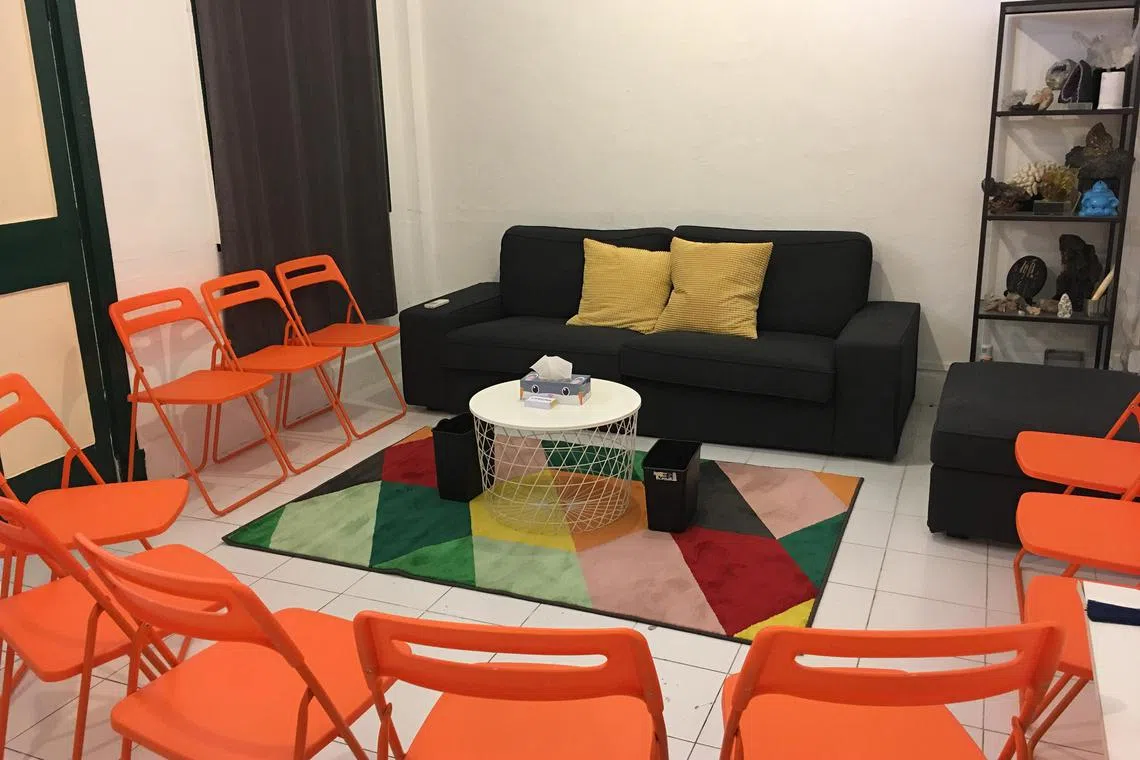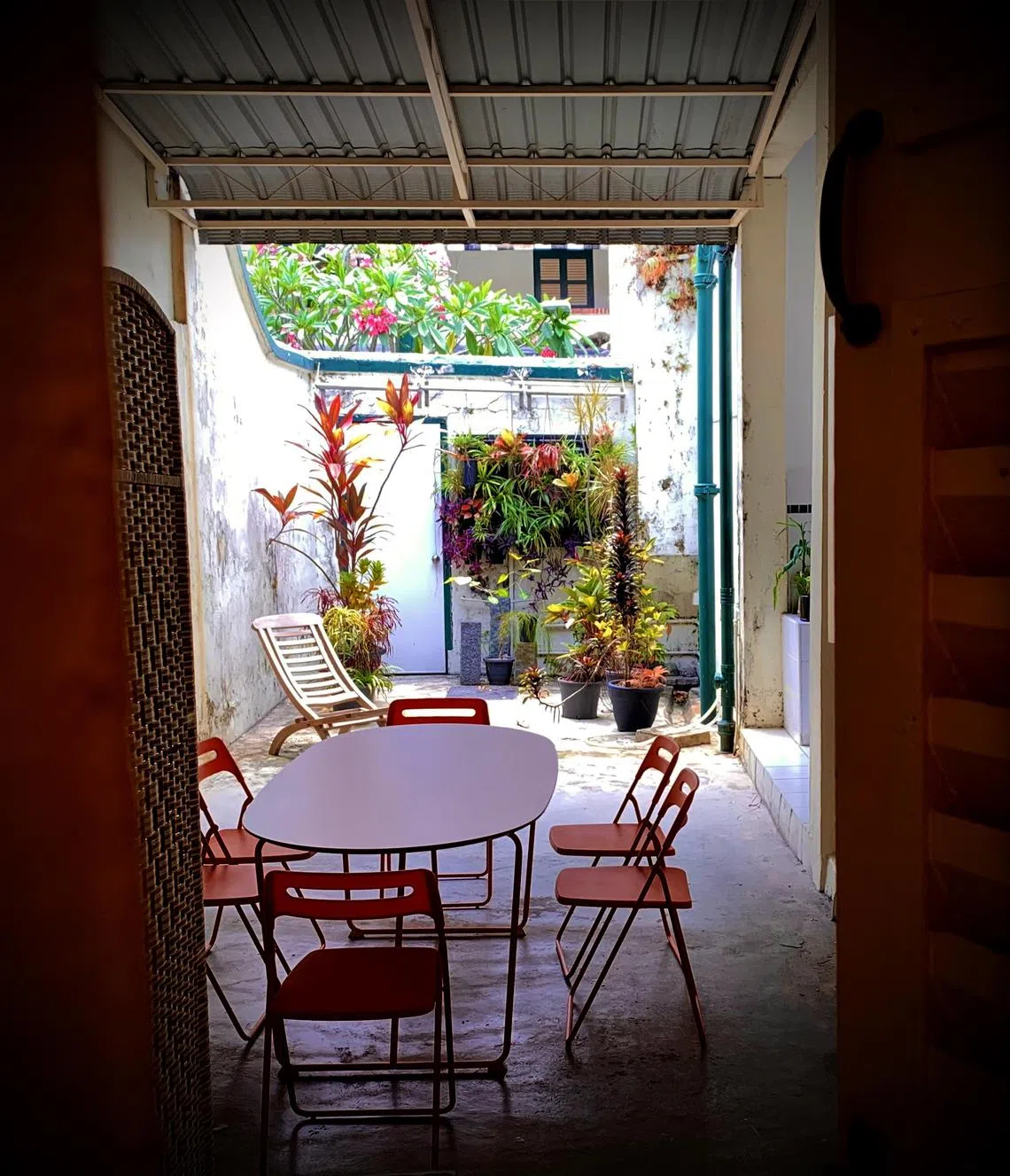Seed funding for S’pore charities: Small charities repay their grants as they grow
Sign up now: Get ST's newsletters delivered to your inbox

From 50 drug users in its first year, Greenhouse has now helped around 400 users.
PHOTO: ALARIC TAN
Follow topic:
SINGAPORE - As the founder of a small charity to help drug users overcome their addictions, Mr Alaric Tan found fund-raising almost impossible due to the perception that such individuals were to blame for their substance use, and donations would only fund their addiction.
“There’s so much stigma, discrimination, misunderstanding; no one wants to give money,” said Mr Tan, founder of The Greenhouse Community Services, a substance recovery centre for marginalised communities set up in 2017. “It’s very, very difficult.”
He had used his own savings to run Greenhouse, which had only $10,000 left in the bank by 2021 – enough to operate the drug rehabilitation centre for another three months – when he found out about a new grant which would give him up to $150,000.
Mr Tan hesitated to apply for it because there was a catch – he would have to return the amount.
Mr Tan took the leap of faith, with Greenhouse being one of 17 charities picked to receive the Maybank Momentum Grant. Designed as a pay-it-forward model, the $3 million grant was launched in 2021 by Maybank Singapore and non-profit philanthropic organisation The Majurity Trust.
Recipients are encouraged to return the grant interest-free within five years, with the money going into supporting other grant recipients.
A total of 33 charities have applied for the grant so far, with the 17 recipients eventually chosen based on the severity of the social needs they were addressing, the impact they had created, as well as their five-year growth and financial sustainability plans.
In total, $360,000 was committed to the first batch of grant recipients, of which $195,000 has been repaid three years in.
The Majurity Trust checks in with grant recipients on their progress every six months for the first two years, and once a year afterwards.
Social sector observers said that while government grants are typically given to fund specific programmes, grants from private companies can be more flexible in terms of the needs they fund.
Mr R. Jai Prakash, principal consultant at social change consultancy Soci.Train, said of government grants: “You have to be a lot more prudent, given the taxpayers’ donations. And generally, these funds provide funding for programmes where there are national needs that we have identified.
“Such funding becomes useful when social service agencies identify certain gaps that may not qualify for national funding. Some of these more innovative ways of giving through philanthropists or institutions like banks can support some of these niche needs.”
Charities also need sources of funding that give them more room to use the money as they see fit.
Mr Steve Loh, executive director of the Lien Centre for Social Innovation at Singapore Management University, said donors are often less willing to pay for operational, overhead and manpower costs, wanting all their donations to go to the beneficiaries.
“A donor is not going to be too excited about paying the utilities bill, purchase of IT software and laptops. But everybody knows those are basic costs to run any organisation,” said Mr Loh.
“Like any organisation, charities will need talented and committed staff, good systems, good operational expertise, execution domain expertise and professionalism. So for a funder to say you have unrestricted funding to spend as you see fit in building up the capacities of your organisation – it is exactly what charities need.”
The grant was coupled with capability-building events such as masterclasses in organisational strategy and impact measurement and communication by talenTtrust, a charity that helps non-profits build capacity with skilled volunteers.
It spurred Greenhouse to hire a training director, communications coordinator and research team.

The substance recovery centre Greenhouse in Rowell Road.
PHOTO: THE GREENHOUSE
With these resources, Greenhouse communicated to the public that its gay members had turned to drugs because of trauma they went through, such as being cast out by religious family members for their sexual orientation.
The centre helps them cope with their trauma with counselling, group support and other therapeutic programmes in their drug rehabilitation.
This helped Greenhouse to achieve the status of a registered charity, and later of an Institution of a Public Character, in the span of three years. From 50 drug users in its first year, it has now helped around 400 users.
Another grant recipient was mental health charity Limitless, which provides counselling, casework and online support networks to youth.
Its founder Asher Low said: “In the first couple of years for charity, you expect not to get grants because people are waiting for you to prove the point of your work.”
He added: “As a small charity, it’s very hard to raise $150,000. And if I take a $150,000 loan, I would always be worried about debt that I have to repay in a year, two years, and the interest I will accrue. But this one doesn’t make me stressed about that. I will repay if I can, but it’s okay if I take longer. I don’t have to put my house as collateral.”
He used the grant to hire corporate fund-raisers skilled in sales and marketing, to bring in public donations on top of grants. This helped him to grow his team from around eight to 24 currently, with the charity serving more than 1,000 young people a year, up from around 200 in 2020.
“I felt like I could try because I had this amount of money. We had the buffer to make mistakes, and find out what are some strategies that work for us and don’t work for us,” said Mr Low.
For instance, while its art competition and art auction did not take off, a charity run helped raise $70,000, he said.
And non-profit Engineering Good, known for distributing refurbished laptops to underprivileged students to carry out home-based learning during the Covid-19 pandemic, used the grant for overheads and payroll for its staff to tide itself through cash-flow issues during the pandemic.
Ms Lim May-Ann, who chairs the charity’s board, said typical grants give only around 20 per cent of the grant upfront.
The rest is borne by the charity until the programme is completed, and the expenses reported are reimbursed. This became a problem during the pandemic, when programmes had to stop.
“The (Maybank) grant was used to ensure that we still had positive cash flow in order to continue to pay the things which couldn’t stop – rent, utilities and payroll – while we waited for the pandemic to be over so that we could fulfil the conditions of the grant,” she said.
The charity repaid the full $150,000 in March 2024, two years ahead of schedule.
Mr Charles Tan, senior director of philanthropy at The Majurity Trust, said: “The higher-than-expected repayment from the first cohort of grant recipients has shown that supporting promising small charities with flexible grants, at their growth inflection points, can propel their organisation to grow and scale.
“It is remarkable to see the earlier batches of charities helping the newer cohorts, not only by committing to paying it forward… but also the non-monetary peer mentoring and camaraderie between different grantee partners.”
Limitless’ Mr Low said the grant helps small charities grow to a point where they do not need to continue to have the money.
While the charity has repaid only a third of the grant so far, he is not losing sleep over it.
“There’s little expectation as to when I need to pay back. But I want to pay back because there’s going to be another charity that needs the money,” said Mr Low.

